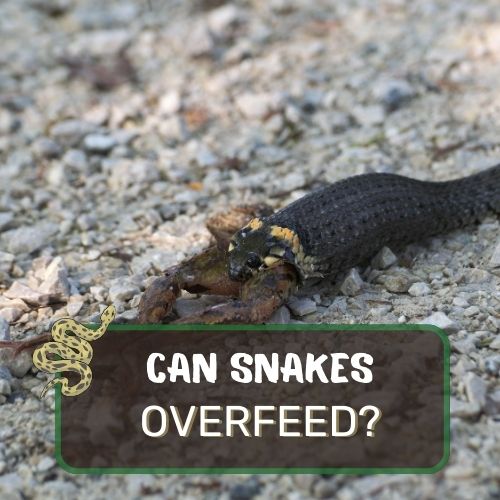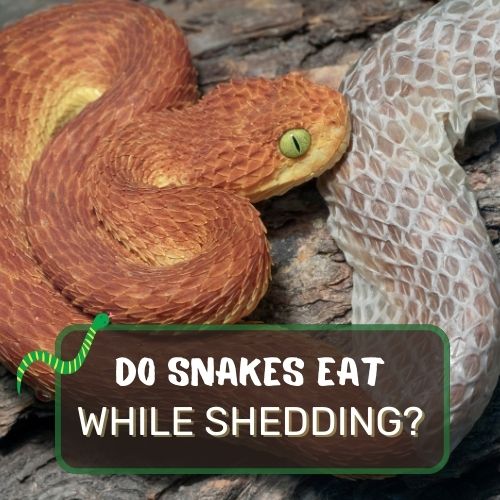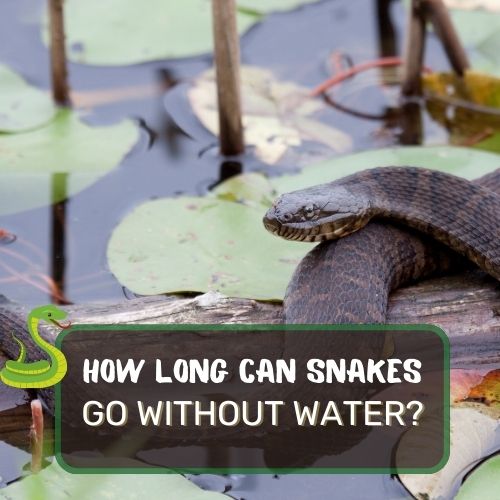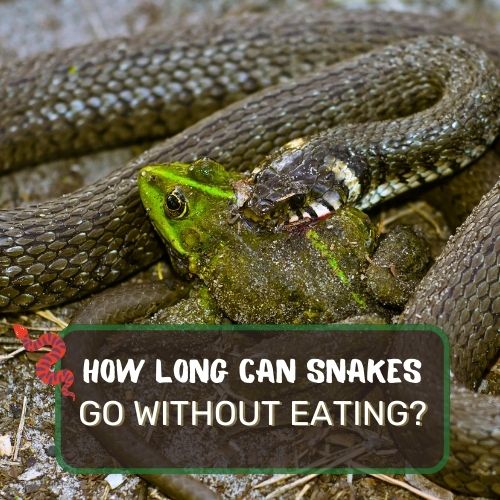
Are you curious about the fascinating world of snakes and their eating habits?
Wondering if snakes can overfeed and what it means for their well-being?
In this engaging article, we’ll delve into the intriguing question, “Can snakes overfeed?”
Exploring their feeding habits, the types of snakes prone to overeating, factors contributing to overfeeding, and the potential consequences, we’ll shed light on the importance of responsible feeding practices.
From debunking misconceptions to providing tips for prevention and management, this article aims to empower you with knowledge to care for these mesmerizing creatures effectively.
So, grab a seat and prepare to slither into the world of snake feeding!
Table of Contents
- 1 Can snakes overfeed? (Short Answer)
- 2 Can snakes eat more than they should? (Ultimate Guide)
- 3 Consequences of overfeeding snakes
- 4 Signs of overfeeding in snakes
- 5 Prevention and management of overfeeding in snakes
- 6 Common misconceptions about snake feeding
- 7 FAQs about snake feeding and overfeeding
- 8 Key points discussed in this article
Can snakes overfeed? (Short Answer)
Yes, snakes can overfeed. While snakes have unique metabolisms that allow them to consume large meals, overfeeding can lead to serious health issues. Offering prey that is too large or feeding them too frequently can cause obesity, digestive problems, and other complications. Responsible feeding practices, such as establishing a proper feeding schedule and offering appropriately sized meals, are essential to ensure the well-being of snakes.
Can snakes eat more than they should? (Ultimate Guide)

Snakes’ feeding habits and metabolism
Hey there, snake enthusiasts! Today, we’re going to explore a fascinating question: Can snakes eat more than they should? 🐍
Snakes are remarkable creatures known for their unique eating habits and impressive metabolisms. Unlike us humans who munch on three meals a day, snakes have a more laid-back approach to dining.
They are often opportunistic eaters, capable of consuming prey much larger than their own heads! Talk about jaw-dropping flexibility!
When a snake gets its jaws around a meal, it’s like watching a magic trick unfold. Their specialized jawbones can unhinge, allowing them to stretch their mouths to jaw-dropping proportions—quite literally!
This ability enables them to gulp down food that might seem impossibly large at first glance.
Types of snakes that are prone to overeating
Not all snakes have the same appetite, though. Some snake species are more prone to overeating than others. Take the mighty pythons, for example.
These serpents are known for their gargantuan appetites and ability to devour sizeable meals. They have a “go big or go home” approach to eating, which can sometimes lead to overindulgence.
But let’s not forget our boa constrictor buddies. Despite their constricting behavior, they have an insatiable appetite too. Once they find a meal they like, it’s tough for them to resist going for seconds, or even thirds!
Factors that can contribute to overfeeding in snakes
Now, you might wonder what makes snakes susceptible to overeating. Well, just like us humans, they too can fall into the temptation of overindulgence.
One major factor is how often they are offered food. If a snake is fed too frequently, it might get carried away and chomp down more than it should.
Another factor is stress. Yes, even snakes can feel it! Stress can lead them to seek comfort in their favorite activity—eating.
So, if you see your slithery friend going for the buffet more often than usual, it might be a sign that they’re feeling stressed out.
Consequences of overfeeding snakes

Obesity in snakes and its impact on their health
Just like humans, overeating can lead to obesity in snakes. Packing on the pounds may seem cute at first, but it can quickly become a serious health issue.
Obese snakes are more prone to various health problems, just like any other overweight creature.
Imagine trying to slither around with extra baggage! It can put a lot of strain on their bodies and make movement difficult.
Obesity might also affect their ability to escape from predators or catch prey, endangering their survival in the wild.
Digestive issues caused by overeating
Let’s talk digestion. Overeating can cause serious digestive problems in snakes. When they devour meals that are too large, it puts a tremendous load on their digestive systems.
This can lead to regurgitation, indigestion, and other tummy troubles. Ouch!
Overeating in snakes can lead to a range of digestive complications:
- Regurgitation: Consuming prey too large or eating too frequently can cause a snake to regurgitate its meal. This is not only wasteful but also stressful for the snake and can lead to dehydration.
- Impaction: Overeating can result in impaction, where the digestive tract gets blocked, especially if the prey has indigestible parts like fur or feathers. This can be life-threatening if not addressed.
- Slower Metabolism: Overburdening the digestive system can slow down the snake’s metabolic rate, leading to prolonged digestion times.
- Increased Vulnerability: After a large meal, snakes become less mobile, making them more vulnerable to predators.
- Stress and Discomfort: Overeating can cause visible discomfort, with the snake appearing swollen, lethargic, and showing signs of stress.
For these reasons, it’s crucial to feed snakes appropriately sized prey at suitable intervals.
Increased risk of other health problems
If snakes consistently overfeed, they might also face a higher risk of developing other health issues. For instance, their organs could be under constant stress, leading to potential organ failure or other complications.
We want our snake friends to live long and healthy lives, don’t we?
In conclusion, while snakes are fascinating creatures with amazing eating abilities, they can indeed overeat.
We must be mindful of their feeding habits, avoid stress triggers, and provide them with a balanced diet. Just like any other animal, moderation is the key to keeping our slithery pals happy and healthy!
Remember, when in doubt, consult a reptile expert or a veterinarian who can guide you on the best way to feed and care for these mesmerizing creatures. Stay snake-savvy, everyone!
Signs of overfeeding in snakes

Physical signs of obesity in snakes
Now that we know overfeeding can be a concern for our slithery friends, let’s talk about how to spot the signs of obesity in snakes.
One obvious indicator is a significant increase in body girth. If your snake starts to resemble a snake-shaped watermelon, it might be time to reevaluate its diet.
Besides the girth, keep an eye on their scales.
An overfed snake might have a harder time shedding its skin properly, resulting in incomplete or irregular sheds.
Changes in behavior indicating overfeeding
Behavior can speak volumes! When snakes overeat, they might become lethargic and less active.
If your once agile serpent now prefers to lounge around rather than explore its surroundings, it could be a sign of overindulgence.
Another behavior to watch out for is loss of interest in food. Surprisingly, this could mean they are already full and not hungry for their next meal.
So, as much as we adore watching them eat, let’s resist the temptation to be overly generous with their portions.
How to determine if a snake is still hungry after feeding
Knowing if your snake is still hungry after a meal can be tricky. Unlike us, they can’t verbalize their feelings! But don’t worry; there are some clues you can look for.
If your snake is exhibiting “hungry” behavior like constantly prowling its enclosure, flicking its tongue more frequently, or showing interest in prey items outside of feeding time, it might be asking for seconds.
However, keep in mind that snakes don’t have a “hunger gauge” like some video game characters. Feeding them on a regular schedule and offering appropriately sized meals should keep them content and avoid the temptation to overeat.
Prevention and management of overfeeding in snakes

Establishing a proper feeding schedule and portion control
Prevention is better than cure, they say! To avoid overfeeding, it’s crucial to establish a proper feeding schedule for your snake.
Research the specific species of your snake to understand their natural feeding habits and requirements.
A common practice is to feed adult snakes every 1-2 weeks and juveniles more frequently, about every 5-7 days. Remember, snakes can be patient hunters, so they don’t need daily meals like our furry pets.
Portion control is equally important. As tempting as it might be to see them gulp down another mouse, avoid the urge to overfeed. A meal that leaves a small bulge in their belly is sufficient. It’s all about moderation, folks!
Selecting appropriate prey sizes for snakes
Just like Goldilocks searching for the perfect porridge, we need to find the right-sized prey for our snakes. Feeding them prey that is too large can lead to overeating and cause digestive issues.
On the other hand, prey that is too small might not meet their nutritional needs.
A general rule of thumb is to offer prey that’s about the same width as the snake’s thickest body part. This ensures they can comfortably swallow their meal without any problems.
Monitoring and adjusting feeding habits as the snake grows
Our snakes grow, just like we do! As they go through different life stages, their feeding habits will change too. Keep a close eye on their body condition and adjust the feeding schedule and prey size accordingly.
Young snakes might need more frequent meals, while adults can go longer between feeds. If you notice any signs of obesity or underfeeding, it’s time to reevaluate their diet and make the necessary adjustments.
Remember, understanding and managing a snake’s feeding habits is an ongoing process. Keep learning, observing, and making informed decisions to keep your scaly companion in the best shape possible!
Common misconceptions about snake feeding

Myth: Snakes should be fed as much as they can eat
Ah, the classic “all-you-can-eat” approach. While it may work for some buffet lovers, it’s definitely not the best strategy for our scaly companions.
Feeding snakes as much as they can eat is a common misconception that can lead to serious health issues.
Snakes have unique metabolisms, and their bodies are designed to handle periods of fasting between meals. Overfeeding them can result in obesity, digestive problems, and overall poor health.
Remember, moderation is key, and sticking to a proper feeding schedule is essential for their well-being.
Debunking the idea that larger prey is better for snakes
Bigger is not always better, especially when it comes to snake feeding. Some believe that offering larger prey items is beneficial for the snake’s growth and development. However, this is a misconception that needs debunking.
Feeding snakes prey that is too large can put unnecessary strain on their digestive systems and may even cause regurgitation or other health complications.
As mentioned earlier, it’s best to stick to appropriately sized prey that matches the girth of the snake’s body.
Addressing the misconception that overfeeding is harmless
Another common misconception is that overfeeding doesn’t harm snakes—after all, they always seem eager to eat! But just like us, snakes can suffer the consequences of overindulgence.
Obesity, lethargy, and digestive issues are real risks that come with overfeeding.
As responsible snake keepers, it’s crucial to strike a balance between providing them with enough food to thrive and avoiding the temptation to overfeed them.
FAQs about snake feeding and overfeeding
How do I know if I feed my snake too much?
Great question! Monitoring your snake’s body condition is the key. If you notice a significant increase in girth, irregular shedding, or a decrease in activity, it might be a sign of overfeeding. Additionally, observe their behavior after feeding; if they appear lethargic or disinterested in food during their regular feeding schedule, you may be offering them too much.
How often should snakes be fed?
The frequency of snake feeding varies depending on their age, species, and size of prey offered. Generally, adult snakes are fed every 1-2 weeks, while juveniles may require more frequent meals, about every 5-7 days. However, it’s essential to research your specific snake’s dietary needs for a more accurate feeding schedule.
Why do you only feed a snake once a week?
Snakes have evolved to handle periods of fasting between meals. Feeding them once a week allows their digestive systems to process the meal properly and ensures they maintain a healthy body condition. Overfeeding or feeding too frequently can lead to health issues, as mentioned earlier.
How long after feeding do snakes poop?
The timing of snake bowel movements varies, but it usually takes anywhere from a few days to a week after feeding for them to poop. Some snakes may defecate shortly after eating, while others may take longer. Keep an eye on their enclosure and be patient; nature works on its own schedule!
How do you know if a snake is underfed?
If your snake is underfed, you may notice a decrease in body weight, lack of muscle tone, and lethargy. Their skin might also appear loose or wrinkled. If you suspect your snake is not getting enough to eat, consult with a reptile expert or veterinarian to adjust their feeding regimen accordingly.
Keep these FAQs in mind while caring for your snake, and you’ll be on your way to being a responsible and knowledgeable snake parent!
Key points discussed in this article
In this snake-tastic journey, we explored the intriguing question of whether snakes can overfeed. We learned that while snakes possess impressive eating abilities, they are not immune to the consequences of overindulgence.
Understanding their unique feeding habits and metabolism is essential for their well-being.
We discussed the types of snakes that are more prone to overeating, as well as the factors that can contribute to this behavior.
Obesity, digestive issues, and other health problems were identified as the potential consequences of overfeeding.
Just like with any pet, responsible feeding practices are crucial for the health and happiness of our serpentine companions.
Establishing a proper feeding schedule, portion control, and offering appropriately sized prey are vital steps to prevent overfeeding and its associated issues.
It’s essential to be aware of common misconceptions about snake feeding, such as the idea that they should be fed as much as they can eat or that larger prey is always better.
By dispelling these myths, we can better care for our snake friends and ensure their well-being.




0 Comments